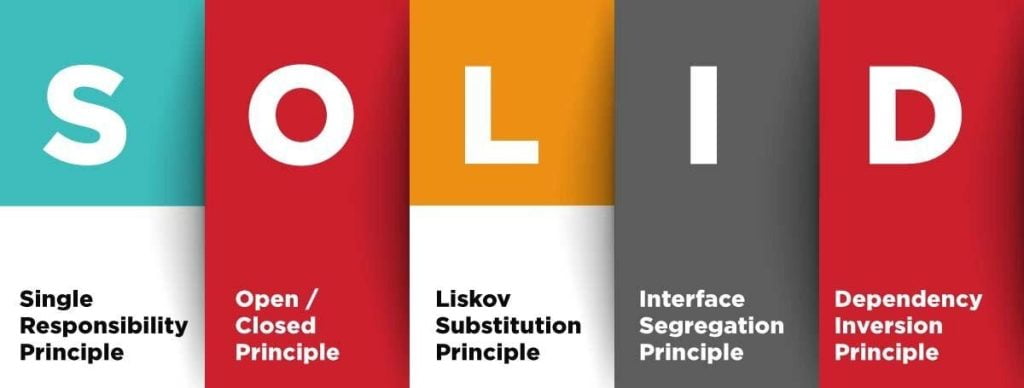SOLID Principles: Crafting Code for Scalability and Maintainability
Welcome to the world of SOLID principles – the not-so-secret recipe for writing code that’s not just functional, but scalable and easy to maintain. In this journey, we’ll explore how these principles become your coding compass, guiding you towards building software that’s not just good but great. So, buckle up, and let’s make your code scalable, maintainable, and downright awesome!
Let’s go through each of the SOLID principles using Java examples. You can also use python as well.
1. Single Responsibility Principle (SRP):
- Idea: A class should have only one reason to change, meaning it should have only one job or responsibility.
- Example: Think of a chef in a restaurant. They prepare the food. They don’t manage reservations or clean tables.
Java Code:
public class UserService {
public void registerUser(User user) {
// Code for registering a user
}
public void deleteUser(User user) {
// Code for deleting a user
}
}
UserService handles user-related actions, focusing on user registration and deletion. It doesn’t get involved in tasks beyond its user-centric responsibilities.
2. Open/Closed Principle (OCP):
- Idea: Software entities should be open for extension but closed for modification.
- Example: Imagine a store that sells clothes. You can add new clothing items without changing the store’s structure.
Java Code:
public interface Shape {
double calculateArea();
}
public class Circle implements Shape {
private double radius;
// Constructor and other methods...
@Override
public double calculateArea() {
return Math.PI * radius * radius;
}
}
public class Square implements Shape {
private double side;
// Constructor and other methods...
@Override
public double calculateArea() {
return side * side;
}
}
Interfaces like Shape remain open for new shapes (extensions) to be added without modifying existing shapes (closed for modification).
3. Liskov Substitution Principle (LSP):
- Idea: Subtypes should be interchangeable with their base types without altering program correctness.
- Example: If a program works with a bird, it should work with any bird subtype like a sparrow.
Java Code:
public class Bird {
public void fly() {
// Code for flying
}
}
public class Sparrow extends Bird {
// Inherits fly() from Bird and may add specific behavior
}
Sparrow is a subtype of Bird, and it can be used interchangeably with the base type (Bird).
4. Interface Segregation Principle (ISP):
- Idea: No class should be forced to implement interfaces it does not use.
- Example: Think of a smartphone. It doesn’t need to implement functionalities it doesn’t support, like printing.
Java Code:
// Instead of a single, monolithic interface
public interface Worker {
void work();
void eat();
void sleep();
}
// Separate interfaces for different roles
public interface Workable {
void work();
}
public interface Eatable {
void eat();
}
public interface Sleepable {
void sleep();
}
public class Employee implements Workable, Eatable {
// Implements only what is necessary
}
Instead of a monolithic Worker interface, separate interfaces (Workable, Eatable, Sleepable) allow classes to implement only what they need.
5. Dependency Inversion Principle (DIP):
- Idea: High-level modules should not depend on low-level modules. Both should depend on abstractions.
- Example: Consider a remote control. It doesn’t need to know the internal details of the devices it operates.
Java Code:
// High-level module
public interface MessageService {
void sendMessage(String message);
}
public class EmailService implements MessageService {
@Override
public void sendMessage(String message) {
// Code for sending an email
}
}
public class Notification {
private final MessageService messageService;
public Notification(MessageService messageService) {
this.messageService = messageService;
}
public void sendNotification(String message) {
messageService.sendMessage(message);
}
}
Notification depends on the abstraction (MessageService), allowing different implementations (like EmailService) without altering the high-level module.
Wrapping Up
Mastering the SOLID principles is like having a secret sauce for writing awesome code. Each principle, from making sure every piece of code has its own clear job to allowing easy additions without breaking things, guides you towards crafting software that’s not just good today but stays strong and adaptable tomorrow. So, applying these SOLID principles in your coding journey ensures that your software is not only functional but also scalable, maintainable, and adaptable to future changes. Happy coding!




Great piece, easy to understand. thanks!